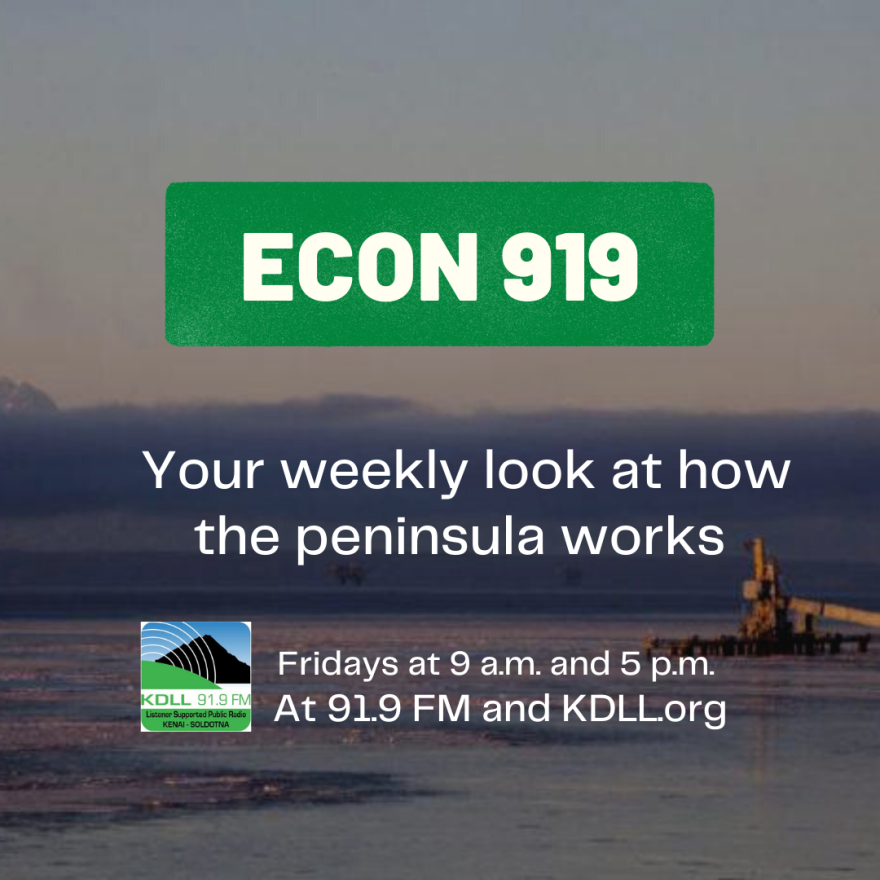At the start of 2021, Homer Electric Association made a sort of New Year’s resolution: source half of all its power from renewables by the end of 2025.
It’s the most ambitious renewables goal of any utility on the railbelt. Some of the board’s directors say it’s too ambitious. The co-op relies on natural gas for more than 85 percent of its energy today.
Other directors say it’s important to have high-level targets to drive decisions.
"This is basically a goal we’d like to meet," said board member Mike Chenault at a meeting Tuesday. "We’re not going to meet it. There's no way you’re going to meet 50 percent renewable by 2025. I think we all know that. But I think it keeps it in a forefront that we’re trying to move the ball forward.”
David Thomas knows it's an ambitious goal. But he thinks it’s doable, and important for keeping down costs for ratepayers.
Thomas is the director of strategic services for the co-op. That means one of his jobs is getting it to that 50-percent goal.
“What is unusual about the peninsula is we are resource rich," he said at a REPower the Peninsula presentation this week.
First, there’s natural gas. That’s the basket where HEA’s put most of its eggs so far.
But Cook Inlet natural gas is relatively expensive. HEA say it wants to diversify so it’s not so reliant on one source.
The rest of its electricity comes from hydropower, a renewable resource. Bradley Lake, across Kachemak Bay, supplies HEA with about 14 percent of its power.
And it's looking at another 4-ish percent from the long-awaited Grant Lake project, in Moose Pass — though Thomas says it's hard to predict exactly how much power it will generate, since snowmelt and runoff vary from year to year.
Beyond hydro, power producers are also looking at tidal, using Cook Inlet’s world-class tides, and geothermal power, using energy from volcanoes like Mt. Spurr. Those projects still have a long way to go.
Thomas says a private company’s plan to install a solar farm on the peninsula, producing 20 megawatts for HEA, is one of the more far-along renewable projects they’re exploring.
And now, HEA is applying for grant funding to probe the feasibility of wind power at several sites on the peninsula — in Nikiski, Ninilchik, Summit Lake and Caribou Hills.
The co-op has come close to developing wind power twice before. Neither project came to fruition.
Thomas said the next steps will be studying the resource and gathering data..
“It will be probably a six-month effort to model our existing assets and then play, ‘What if?’ This much wind, that much solar," he said. "This different wind prospect and a little more solar. And look at these different combinations to, again, look for that lowest cost of power.”
But with so many projects in the early stages, some HEA directors say they fear the co-op is too far from hitting its mark.
“I make a motion we change that 50 percent to match what we think our HEA team can achieve by 2025," said board member Robert Wall at the Tuesday meeting.
He said it seems unlikely that the co-op will get to 50 percent in four years. It’s less than a third of the way there, though it’ll be a smidge closer if it can get Grant Lake online soon.
“I still believe that we should have achievable, measurable goals," Wall said. I don't think we should have anything that’s stated at 50 percent, because people are going to read that and expect us to be there.”
Director Erin McKittrick said it’s true that HEA might fail to reach its lofty goal. And she said even if there are several projects in development, it’s possible the electricity from those projects isn’t all flowing by the time the clock strikes midnight on Dec. 31, 2025.
But she says it's a sort of guiding light.
“This is not a mandate, this does not require us to vote to approve a bad project," she said. "It’s basically setting a goal, saying we’re working toward this and we're going to put energy toward developing potential options.”
She said the board doesn’t have to pursue options if they don’t make economic sense, or if they would hurt reliability.
Ultimately, the board voted to stick with its 50-percent goal.
Thomas said whether HEA can get there will depend on the board’s willingness to finance renewable projects going forward. He thinks if they find the right mix, they could hold rates steady.
With inflation putting pressure on rates and expected rises in natural gas prices, he says that would be a win.






